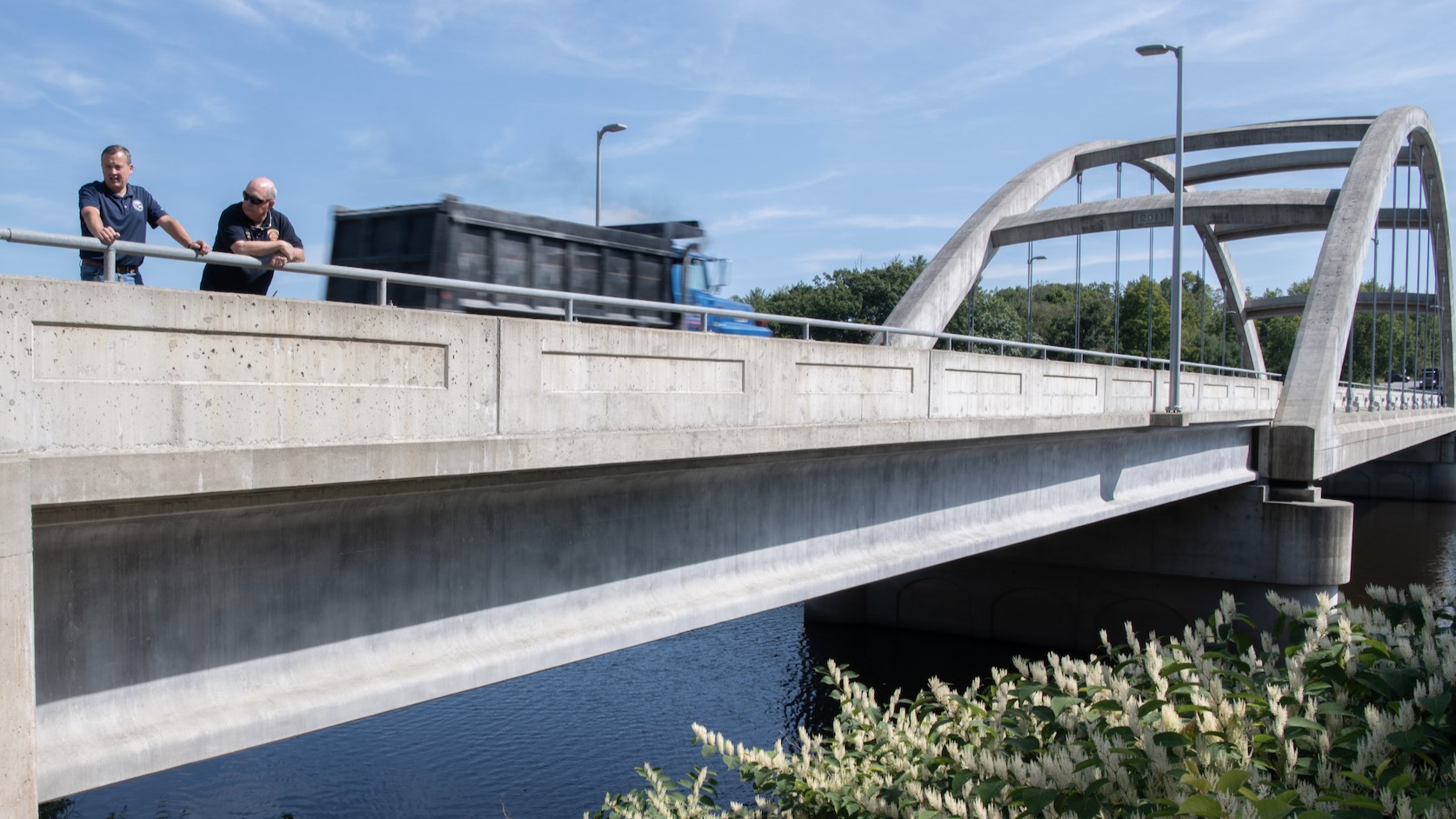On the morning of Dec. 19, 2023, Norridgewock Town Manager Richard LaBelle felt the Route 201A bridge sway beneath his feet as a surging Kennebec River lapped up against its bottom span.
One of the few Kennebec River crossings in Somerset County not yet closed from that day’s disastrous inland Maine flooding, the Cpl. Eugene Cole Memorial Bridge had become a chokepoint for evacuees heading south.
LaBelle scrambled to get ahold of officials from the Maine Department of Transportation to determine whether he should shut off bridge access.
But he and then-deputy fire chief Todd Pineo were told that the agency’s engineers were tied up elsewhere.
“‘Use your judgment.’ That was largely the response we got out of the DOT,” said Pineo, now the department’s chief.
It was a tough call: close the bridge and send evacuees to another river crossing, or risk the chance, however slim, of the bridge failing with people on it.
LaBelle decided to close the bridge.
“It was better to deal with loss of time than loss of life,” he told The Maine Monitor.
Paul Merrill, communications director for the Maine DOT, said that the department sent a team to the bridge later that day, after it had been closed off, and disputed the water level seen by LaBelle.
“The water had not reached the bridge beams as it did at the bridge downstream in Skowhegan, which MaineDOT did close that day,” Merrill wrote in an email. “We performed an underwater inspection on the Norridgewock bridge in July and found no signs of distress.”

The bridge wasn’t the only challenge the town had to navigate on its own. In the flooding’s immediate aftermath, LaBelle was tasked with setting up an emergency shelter for Norridgewock and nearby Fairfield — without staff members able to access Somerset County’s cache of emergency resources.
Trees and power lines were down, roads washed out; coordination was bogged down by a lack of internet and cell service. LaBelle relied on connections with local contractors to clear obstructions when the fire department couldn’t reach them.
One obstacle after another reinforced to LaBelle and Pineo just how isolated and vulnerable Norridgewock is during extreme floods. It’s a position the two don’t want the town to be in again, so they are purchasing equipment and pursuing flood resilience projects — as well as making emergency plans with other officials across the county as they navigate the bureaucracy of state and federal assistance.
“What we learned from December is that all emergencies are local until they’re not,” Pineo said. “You have to be prepared as a town.”
‘There was so much water’
The Kennebec River had already crept up near the base of Norridgewock resident Susan Millett’s house before she woke that morning.
It wasn’t until Millett, who lives alone with her five cats and dogs, received a call from her daughter warning that officials were closing bridges in Skowhegan because of the flooding that she peered out her windows into the dim morning light.
“I looked outside … and the river was just racing by,” Millett said. “It was scary. There was so much water.”
Panicked, Millett drove to the town’s center to buy drinking water when she came across LaBelle and some firefighters on the bridge.
She asked the firefighters at what point she should evacuate, but was told they couldn’t provide specific advice — the water was rising unpredictably.
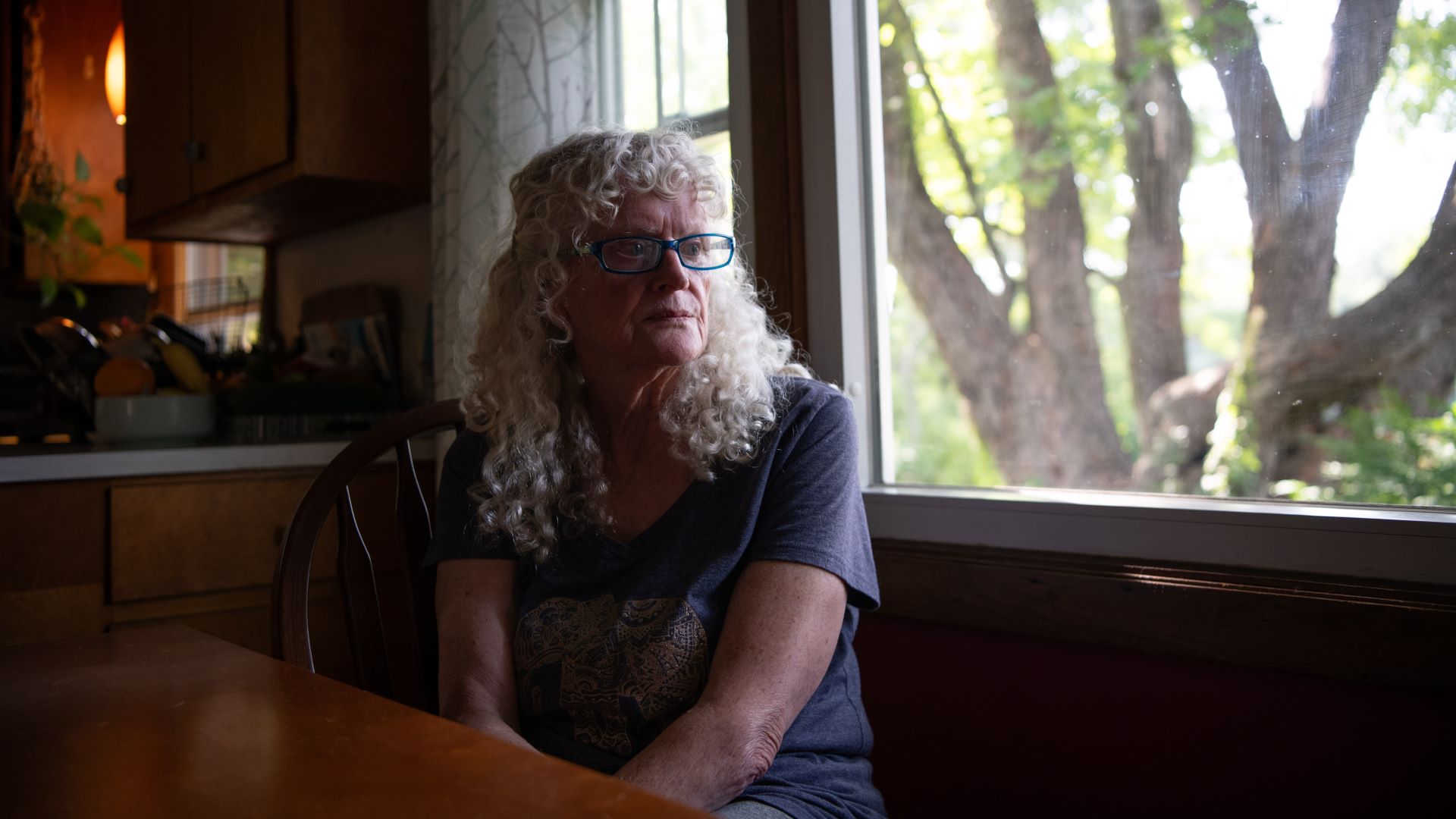
Millett returned home to see the water climbing further and quickly made arrangements to stay at a hotel in Waterville with her pets. She ferried supplies across the icy water in her driveway to the car, grabbing dog food, kitty litter and whatever else she might need for the next few days.
“It was so cold, that water,” Millett recalled. “And when I came in, I changed my clothes because I’m like, ‘I’m gonna freeze to death.’ ”
Millett swapped pants for shorts so the soaked fabric wouldn’t cling to her legs. When she finally made it to the hotel, she found out it was also without power. She then drove to Portland to stay with her daughter.
The evacuation experience scarred her, she said, but the realization that Norridgewock is so vulnerable to flooding is even more painful.
“It has taken me months and months to get over,” Millett said. “I really had a hard time accepting that this is the place where I live and it could happen again.”
Her father had the house built in 1960 for the family when Millett was 15, just up the road from the Skowhegan paper mill where he worked. The structure has survived numerous floods, including the historic April Fool’s Day flood of 1987, which sent water halfway up the first floor.
Each flood carves a sliver of the bank between the back of her house and the Kennebec. A black bucket still hangs from the lower branches of a small maple up a slope from the river’s edge, marking how high the waters reached in December.
“I know the river keeps getting closer because I keep losing riverbank,” Millett said.
Search and rescue
Norridgewock is positioned just under the confluence of two historically flood-prone rivers, with its northwestern limits hugging the Sandy and its population center wedged below a bend in the Kennebec.
Town officials are used to the Sandy River overtopping during smaller floods, but the scale of the Kennebec’s recent flooding was surprising, reminding locals of that 1987 rising.
“We’re inarguably seeing an extreme shift in intensity of weather events,” Pete Rogers, director of the Maine Emergency Management Agency, told the state commission reviewing Maine’s response to last winter’s flooding in June. “Maine people have been forced to confront the consequences of climate change, not as a future hypothetical, but as a present reality.”
In Norridgewock, LaBelle said, the number of floods has increased.
”And unfortunately we have two rivers: the Sandy River, which almost always takes out a road,” LaBelle said. “Now the Kennebec River is posing a threat to people and property.”
The town’s fire department felt that heightened threat on Dec. 19.
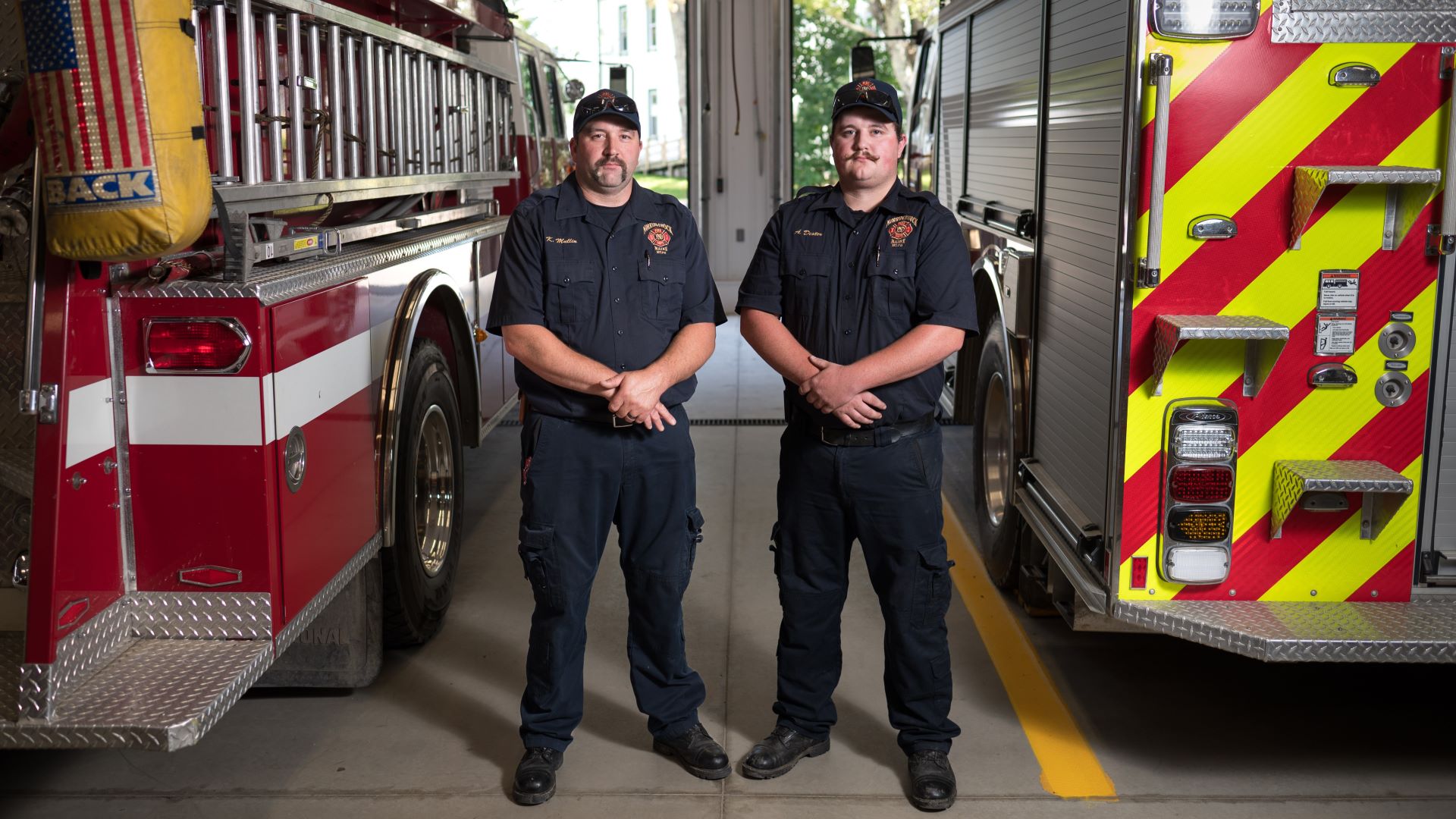
After a morning of knocking on doors and warning residents of the rising waters, Norridgewock’s only two full-time firefighters, Kyle Mullin and Andrew Dexter, received a call from a couple trapped in a house near where the two rivers meet.
Mullin and Dexter coordinated with the Madison Fire Department to use the neighboring town’s rescue boat and bolted to the house along Father Rasle Road on the northern bank of the Kennebec.
When they got there, water was halfway up the house’s main door and rising fast. The firefighters reached out of the boat to rescue the couple from the icy brown water, shocked by what they were seeing.
Unlike much of the region at that point, the couple still had power and cell phone service. The firefighters said they would not have thought to search that area without receiving a call.
“We never expected that to flood because we have never seen it,” Mullin said, not even during the 1987 flood.
“Inconceivable,” added Pineo, the fire chief.
The fire department’s reliance on the Madison rescue boat exposed one of the town’s vulnerabilities. Norridgewock’s own boat, an older metal skiff with an outboard motor, sinks too low to navigate through shallow debris, while its sides are too high for firefighters to effectively lean out and pull people in.
Had Madison been tied up with its own rescues that morning, Norridgewock would have had trouble getting to the couple and rescuing other people stranded in vehicles.
Mullin hopes the department will be able to get a new boat with an inboard motor capable of navigating confined areas, but that’s not an immediate priority.
Funding dilemmas
In the wake of the December storm, more than 2,000 Mainers applied for federal disaster relief funds, according to Anne Fuchs, director of mitigation, planning and recovery at the Maine Emergency Management Agency.
The Federal Emergency Management Agency has disbursed $11.7 million to those applicants, with 12 receiving the agency’s maximum allocation of $42,000.
“When you go through something like this, that’s not enough,” Fuchs told the state commission. “And if people don’t have (flood) insurance, which many don’t, that’s barely anything.”
Millett, who evacuated her home with her pets, has spent nine months going back and forth with FEMA and insurance adjusters over disaster relief and her flood insurance claim, which only covered a fraction of the value of the appliances ruined by floodwater in her basement.

The experience was especially challenging when Millett visited the FEMA outpost in Skowhegan and officials had her use their phone to call an agency supervisor.
Millett, who is hard of hearing, wasn’t able to use the transcription app on her phone during those calls — making it difficult for her to understand what the supervisor was saying.
“It was humiliating,” Millett said.
(A FEMA spokesperson did not comment on Millett’s experience but said the agency provides various accessibility services.)
Meanwhile, the 207 municipalities and private non-profit organizations that applied for FEMA funds are just starting to meet with officials, Fuchs said.
As federal funding slowly unfurls, state grants can only go so far in covering costs for more immediate climate-resilient infrastructure projects. Gov. Janet Mills allocated $60 million for storm recovery in a supplemental budget approved by the legislature this year.
Bob Carey, who sits on the state commission and is the superintendent of Maine Bureau of Insurance, said he was daunted by the costs to both rebuild and bolster damaged infrastructure.
“The town manager of Kennebunkport mentioned that raising one mile of road would cost $3 million and I thought, ‘Well, the state just appropriated $60 million, so we can do 20 miles of road, and that would be the end of the $60 million,’ ” he said.
Only $25 million of the state’s allocation was earmarked for infrastructure projects like roads and culverts, though there are funding sources elsewhere, including the DOT’s Infrastructure Adaptation Fund.
More proactive work outlined in county-level hazard mitigation plans to reduce vulnerability to natural disasters would cost around $205.8 million, according to an estimate in the state’s own hazard mitigation plan from 2023.
Between 2020 and 2023, Maine received about $300,000 per year through the FEMA grant that would fund those projects, according to the plan, which states: “Even if no new projects were added to the list, it would take over 100 years to address all of the previously identified needs!”
Local fixes
In Norridgewock, town officials understand the urgency of the problem and are taking matters into their own hands.
The town has spent $8,200 to buy an emergency management trailer and another $6,000 on cones, barricades and road signs.
A little way upstream from Norridgewock’s center, near where the Sandy River bends and flows into the Kennebec south of Madison, the town plans two bank stabilization projects for an anticipated cost of $475,000, with help from a $2.5 million federal grant.
In August, the Norridgewock Water District received $1.05 million from Mills’ infrastructure resilience grant to replace a critical section of water main especially vulnerable to flooding because of its position right along the Kennebec.
The town also spent $37,500 to patch the stretch of road the water main travels under. Years of flooding have whittled away the bank between the river and Upper Main Street, eliminating an embankment that once had a 25-foot-wide plot of corn.
“I’ve got guardrails slumping into the river,” LaBelle said.
LaBelle hopes to strengthen the road beyond the temporary fix, but it would cost around $1 million and so far conversations with FEMA have only focused on the patch.
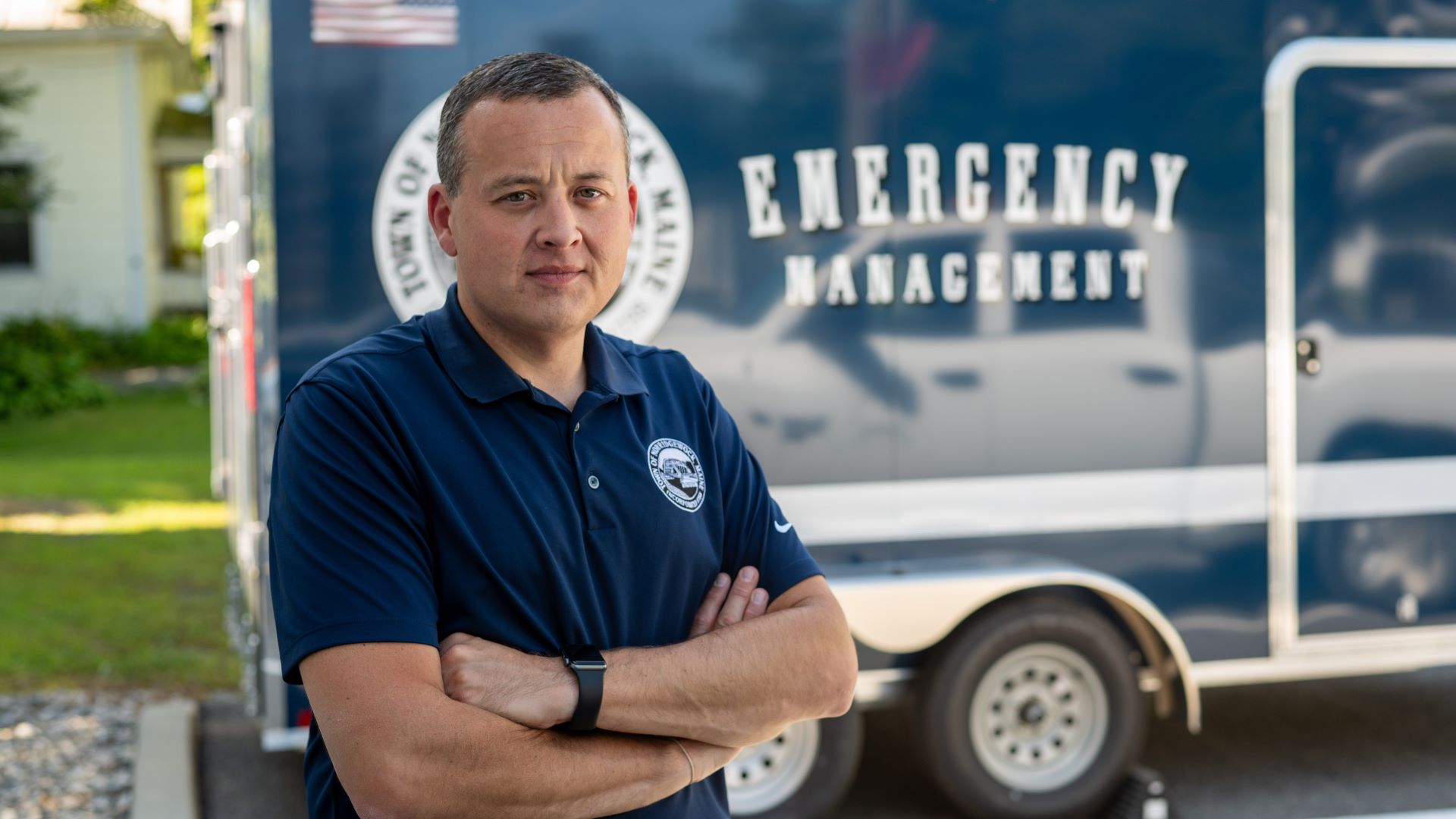
LaBelle, who also serves as the town clerk and emergency manager, is still meeting with FEMA to show the need for additional funding. Disaster funds from the May 2023 flood event only arrived in Norridgewock earlier this summer and the overall process has felt drawn out for him.
“It’s a burden, especially for a small town,” he said.
Such delays aren’t typical, according to Sunny Cyr, management analyst for MEMA, though they can occur “due to the volume of payment requests relative to staffing levels throughout the chain of approvals.”
Natural boundaries
Since the storm, the town has launched an emergency texting service to distribute flood warnings and other critical information, and has begun working with officials throughout Somerset County to think more strategically about coordinating efforts in future emergencies.
Cots and blankets from the Somerset County Emergency Management Agency have been moved to a location near Norridgewock, meaning the town will have greater capacity to take on evacuees from neighboring communities if needed.
Meanwhile, Pineo, the fire chief, has coordinated with other Somerset County chiefs to determine where to stage generators, fuel pumps and rescue coverage when rivers block off local infrastructure.
“Forget the town boundaries for a minute,” Pineo said. “What are the natural boundaries?”
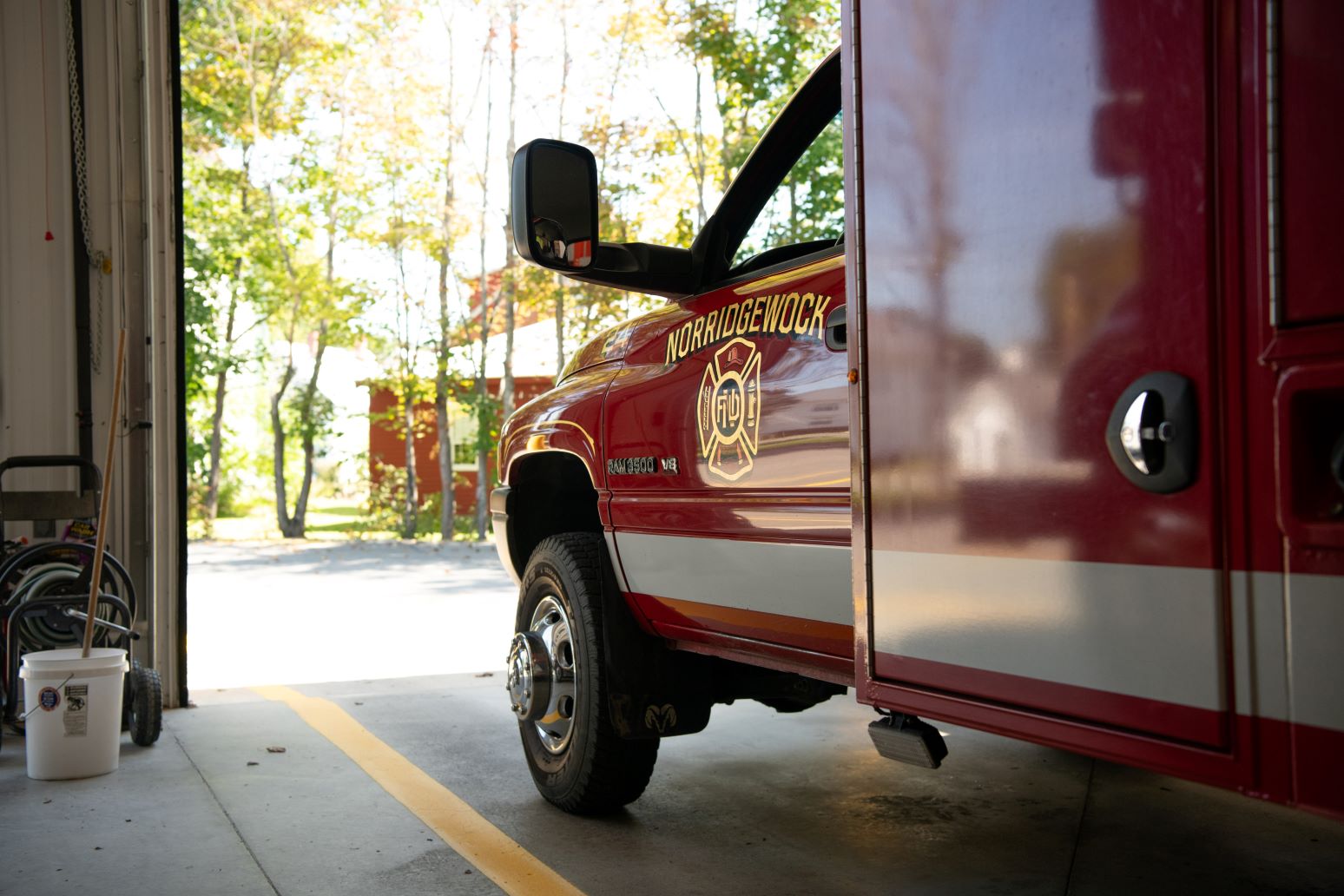
While much of that coordination happens town-to-town in Maine, members of the state’s infrastructure resilience commission heard from Vermont officials about its statewide resource-sharing program called VTWARN, which pools resources and formalizes connections between Vermont wastewater districts.
Jay Town Manager Shiloh LaFreniere, whose town was still grappling with the wreckage from a June 2023 flood before the December storm hit, acknowledged that Maine values the independence of municipalities, but that shouldn’t get in the way of regional cohesion.
“These communities don’t have the capacity,” LaFreniere said, “ and those relationships that (Vermont is) trying to build there, where people can borrow against each other … that’s something that we found we absolutely needed.”


